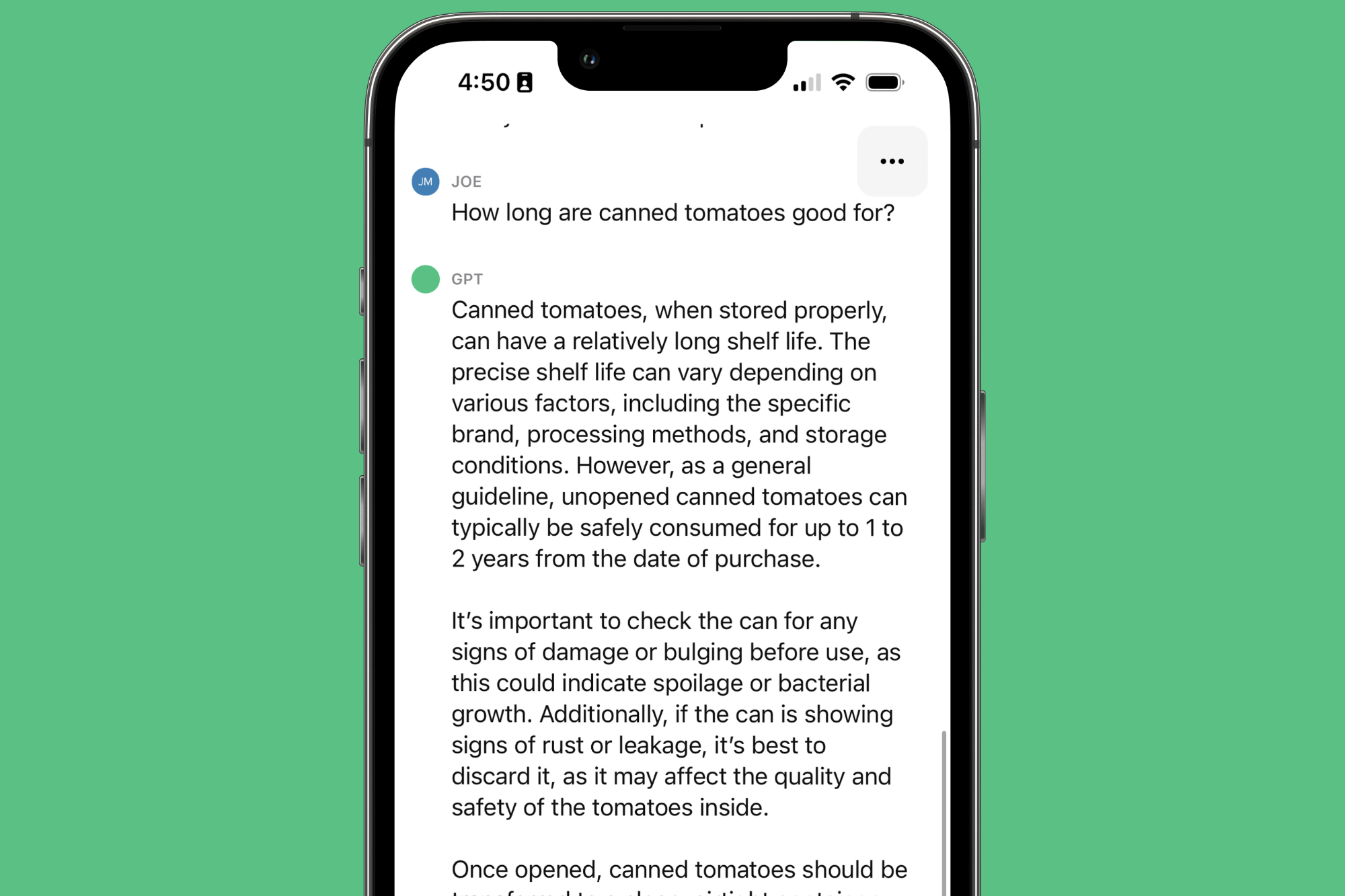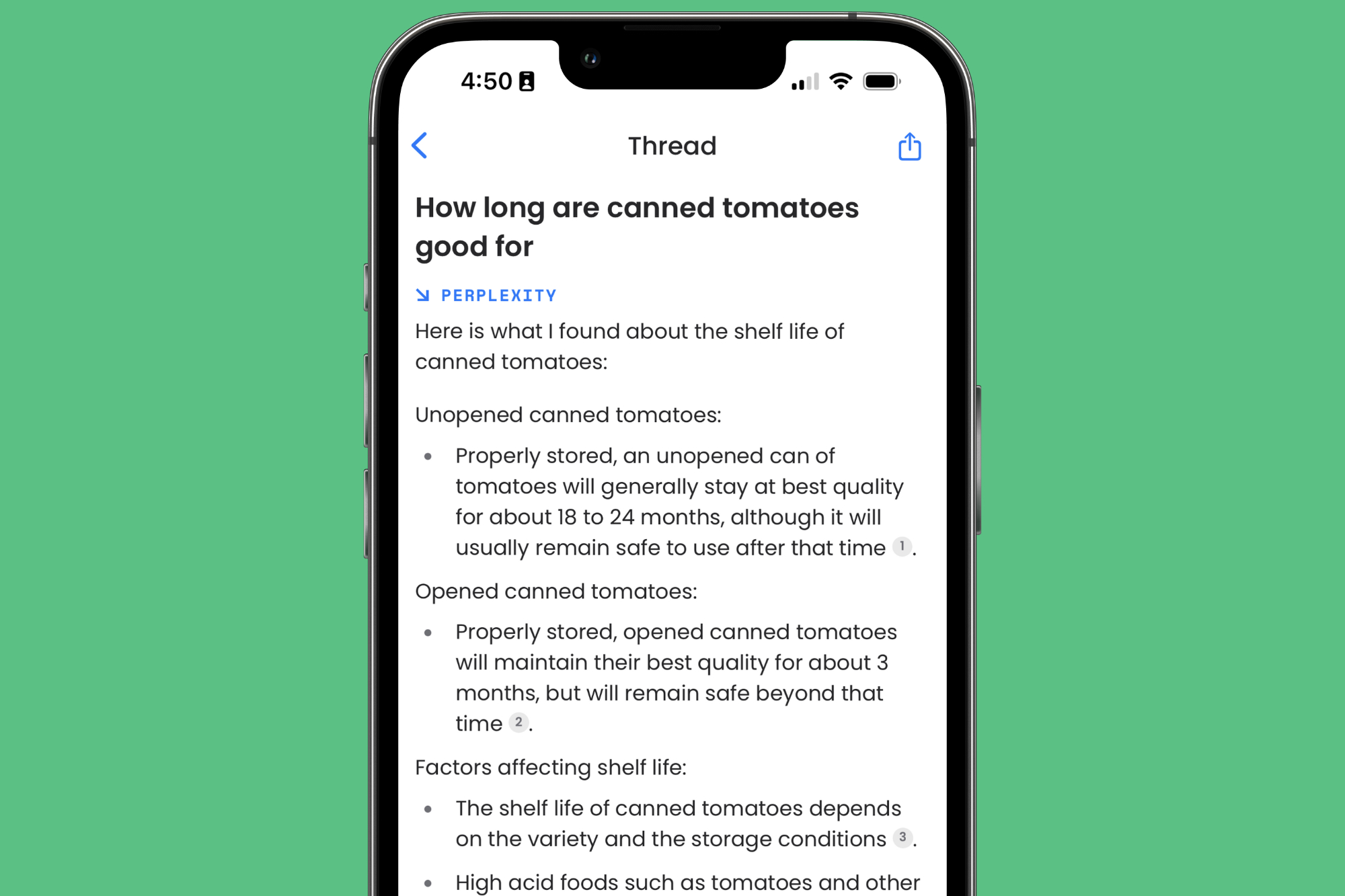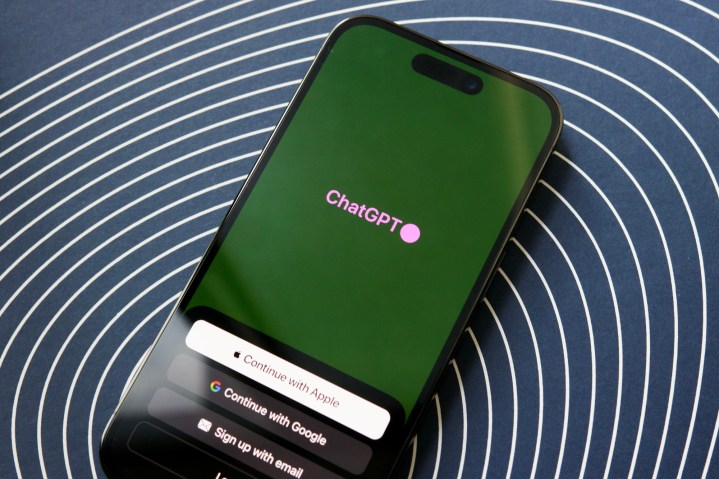
Seemingly out of nowhere, OpenAI released its official ChatGPT iOS app this week. Available for both iPhones and iPads, the free app allows you to use the popular AI chatbot in a much simpler, easier way than ever before. No more messing with the mobile website or trying to fiddle with uncertain third-party apps — just download the official ChatGPT application, and you’re good to go.
It’s a big step forward to make ChatGPT more accessible and to get it into the hands of more people. Naturally, I was curious to test it out for myself. I’ve been using the ChatGPT iPhone app to ask the chatbot various questions, and while the whole thing works just like you’d expect, there’s one big, glaring problem that makes me never want to touch the app again.
The ChatGPT iPhone app’s biggest limitation

Similar to using ChatGPT on a desktop, the ChatGPT iPhone app can’t access current, real-time information. If you try asking the chatbot about a current event or a topic that’s happened in the last couple of years, you’ll see a message that reads, “As an AI language model, I don’t have real-time information or access to the internet beyond my September 2021 knowledge cutoff.”
This has been a known limitation of ChatGPT since its inception, but in a world where competing apps like Google Bard and Microsoft’s Bing Chat do offer internet access — and have done so for some time now — going back to ChatGPT and being hit with that restriction quickly reeled in my expectations.

OpenAI does offer internet access with its $20/month ChatGPT Plus subscription, and you can use ChatGPT Plus features like GPT-4 in the iPhone app. However, as Ars Technica reports, internet access/browsing doesn’t appear to be supported in the current version of the app.
In other words, even if you’re paying $20/month for ChatGPT Plus, you can forget about getting real-time, up-to-date answers about any current topics. That’s likely to change at some point in the future, but it certainly doesn’t create a good first impression — especially with other iPhone chatbot apps already offering it for free.
Using an AI chatbot to surf the web is my personal favorite way to interact with one, and the official ChatGPT iPhone app doesn’t let me do that. But you know what does? Bing Chat, Google Bard, and third-party iPhone ChatGPT apps like Perplexity AI.
No internet access isn’t the only problem
While the lack of internet access is the biggest problem for the ChatGPT iPhone app, it’s not the only one. Even when asking more basic and less timely questions, I’ve found some of ChatGPT’s replies to be … lackluster.
Take, for example, the above query. I asked ChatGPT how long canned tomatoes are good for, and it provided me with multiple paragraphs of rich, detailed information. However, when asking Perplexity AI the same question, I get a much more visually-appealing answer with well-used bullet points. It’s far easier to digest and feels more natural than the walls of text ChatGPT shoved in my face. There were some instances where I preferred ChatGPT’s answer over Perplexity AI, but in general, I prefer Perplexity’s approach to things.
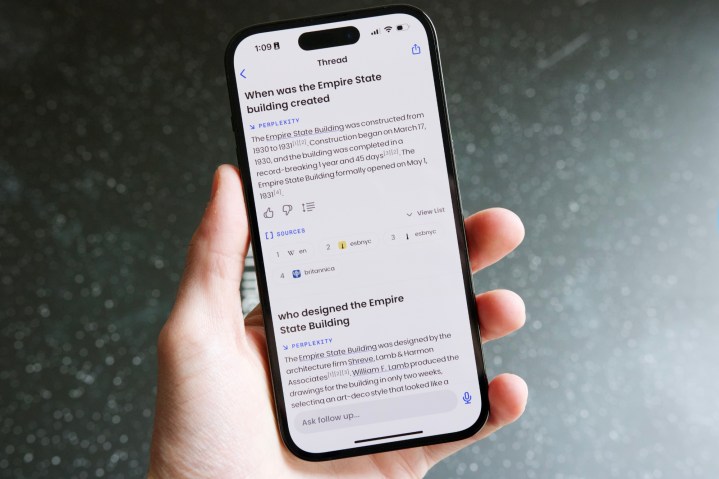
There’s another thing the ChatGPT iPhone app doesn’t know how to do, and that’s how to cite the sources it’s getting its answers from. The ChatGPT app will happily try its best to answer any question you throw at it, but there’s no indication of the sources it’s using for any given answer.
Bing Chat, Google Bard, Perplexity AI, and other apps do a much better job at this. Perplexity AI, for example, provides in-text links to sources throughout its answers, in addition to showing a source breakdown at the end of each answer. Every AI chatbot makes mistakes, so being able to see where a correct or incorrect answer came from is extremely helpful.
More options are never a bad thing
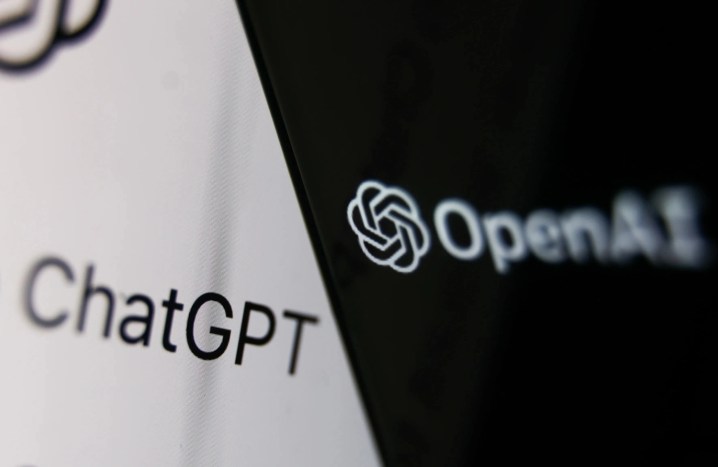
To the ChatGPT app’s credit, using AI chatbots as a search engine with internet access is just one of many ways they can be used. But given that’s how I prefer using them, the current implementation of the ChatGPT iPhone app leaves a lot to be desired. It is a far more enjoyable experience than having to open Safari and use the mobile site, but there’s also still plenty of work to be done.
But that’s also the beauty of how many AI chatbots are available today. If you also want a chatbot with free and straightforward internet access, apps like Bing Chat, Google Bard, and Perplexity AI aren’t going anywhere. And if you’re a ChatGPT loyalist, you now have a much better way to use it on your iPhone and iPad.
I may not be returning to the ChatGPT iPhone app any time soon, but if you don’t need internet access and just want a simpler way to get ChatGPT on your phone, it’s about the best way to do so.
You can download the ChatGPT app now from the App Store.
Editors' Recommendations
- ChatGPT app arrives for Android, but there’s a catch
- Another report suggests the iPhone 15 Pro will be pricier
- These are the only 2 reasons I’m excited for the iPhone 15 Pro
- An iPhone just sold for a crazy amount at auction
- I’ll be furious if the iPhone 15 Pro doesn’t get this one feature

